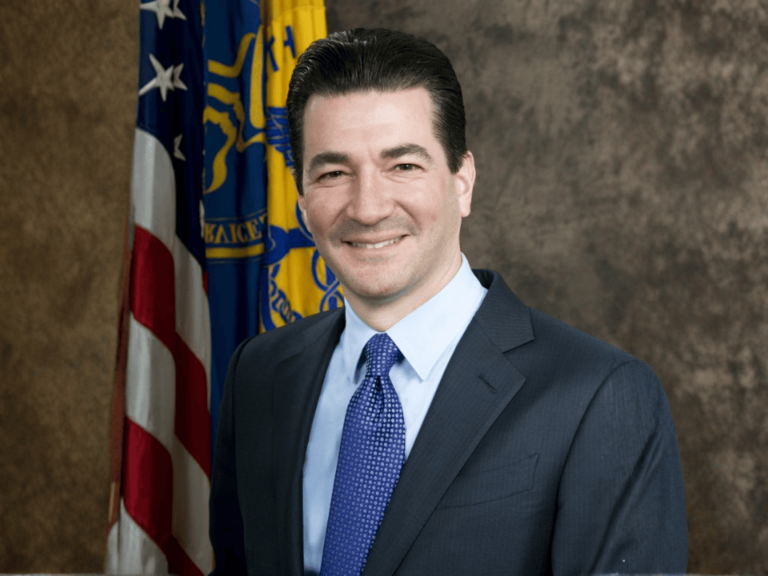More women would die from open surgery each year if the FDA decides to ban power morcellation, said Jubilee Brown, an associate professor at MD Anderson Cancer Center and a spokesperson of the American Association of Gynecologic Laparoscopists.
Addressing the FDA medical device advisory committee July 11, Brown said that a modeling study suggests that net loss of lives from returning to the more invasive open surgery would be greater than the combined mortality from leiomyosarcoma and the potential dissemination through power morcellation.
“Converting all hysterectomies currently undergoing power morcellation to open surgery would result in an annual increase of 17 more women dying from surgery each year, and a substantial increase in morbidity from open surgery,” said Brown, director of gynecologic oncology at The Women’s Hospital of Texas, and associate professor in the Department of Gynecology Oncology and Reproductive Medicine at MD Anderson.
Her slides and remarks are posted on The Cancer Letter website.
Brown is a co-author of the modeling study she cited in her presentation to the panel, which has been submitted for publication (Naumann RW, Brown J, Herzog TJ, Coleman RC).
Critics say that the base assumptions and estimates built into Brown’s model are very conservative, potentially leading to dubious results.
The study assumes that 1 out of 1,000 women have a uterine cancer, a number nearly three times higher than the FDA’s 1 in 350 estimate. An independent study (n=36,470) by Columbia University doctors recently published in JAMA found that 1 in 368 women undergoing hysterectomies have an undetected uterine cancer that could be spread by power morcellation.
“The level of precision in the results that [Brown] shared of 17 deaths that would come from this potential policy change is so high, that it really makes me want to understand the assumptions that are built into the model and the level of precision in those assumptions,” said Michael Paasche-Orlow, an associate professor of medicine and a bioethicist at Boston University School of Medicine. “The sensitivity analyses must have been done to evaluate a range of possible alternatives.
“You can see that they are interested in testing the sensitivity of their model by varying the risk of local spread from 15 to 35 percent, but that is such a conservative estimate, it makes me worried that they may not have actually tested adequately across the range of possible risks.”
Paasche-Orlow is the author of the initial analyses of the risk estimates that led to the FDA’s independent April 17 advisory against power morcellation.
Brown did not respond to requests from The Cancer Letter for further clarification of the data used in the model.
“We have to use risk adjusted numbers for the relative risk of death between one group and another,” Paasche-Orlow said. “Ostensibly, if you said no power morcellation, even if you assumed that everyone must now have an open hysterectomy, you would be taking the healthiest women with the lowest co-morbidities and putting them into that other bucket. You can’t just apply the rate of death in that subset from some historic data.”
Paasche-Orlow said more explanation of the assumptions and details built into the model would be needed.
“I would say, it’s unfortunate that we didn’t have an opportunity to hear more [at the hearing],” he said. “Invariably, they had to make some choices, so [Brown] was able to share that they made a choice to make a guess, which has to be done in these kinds of projects about the risk of local spread.
“However they chose a very conservative estimate. The highest they tested was a 35 percent rate of risk of local spread. That seems to be quite low.
“On the same side, by the way, it says they utilized a conservative estimate of leiomyosarcoma risk of 1 out of 585. That number is not what is in the model she showed us. When we made it big you can see it’s one in one thousand that is what they tested. At least in the slides she shared.”
There are no significant differences in morbidity between abdominal and laparoscopic hysterectomy, Alison Perate, an assistant professor of anesthesiology and critical care at the Hospital of the University of Philadelphia and the Children’s Hospital of Philadelphia, told the advisory panel, citing four published studies.
One in 7,450 Women
Critics also questioned Brown’s citation of the estimate that one in 7,450 women are at risk of leiomyosarcoma, an aggressive uterine cancer.
Elizabeth Pritts, an obstetrician and gynecologist in Middleton, Wis., presented that estimate at the FDA committee hearing. The study Pritts cited has not been published.
Brown should not have endorsed Pritts’ estimate in her presentation, said Hooman Noorchashm, the Harvard physician whose wife, Amy Reed, had her undetected leiomyosarcoma upstaged by power morcellation.
“The fact that Dr. Jubilee Brown, as a spokesperson for the AAGL, was so willing to jump on this new one-in-7,450 number proposed by Dr. Pritts was extremely irresponsible,” he said. “This group of surgeons seems primarily motivated to protect and defend the practice of morcellation, not patient safety.
“This stems from a real and systemic blindness to the deadly hazard involved in what they have been doing. I think it was tragic that someone like Jubilee Brown, as a gynecologic oncologist at MD Anderson, has taken this position.”
Paasche-Orlow said Pritts’ study included other studies going back as far as the 1960s.
“It appears she did some things to expand the denominator, the number of subjects in the studies in question,” he said. “One of the things she did there was to include articles from other languages. I think that’s good.
“Another thing she did was to include studies even though they are really small. The FDA had required for prevalence estimate studies to include at least 100 women. She included much smaller studies. However, the smaller you get, the more liable you are to have a selection bias influencing any kind of estimate.
“When I initially looked at [past risk estimate] studies, and the FDA looked at them as well, we both independently came up with the idea of excluding projects that were small and chose the number 100—which is an arbitrary number—but is typically used for these kinds of projects.
“But for whatever reason, [Pritts’ team] were motivated to include lots of small articles. Maybe that is a source of where some of the differences crept in.”
With power morcellation, physicians must also consider other uterine cancers, not leiomyosarcoma alone, Paasche-Orlow said.
“For whatever reason, [Pritts] decided to exclude and focus only on leiomyosarcoma, which means she excluded cases of endometrial stromal sarcoma or endometrial cancer, or any other kind of cancer. In the FDA numbers, they included both kinds of sarcoma. They weren’t exclusively on leiomyosarcoma.
“Clearly, that is a methodological difference or a difference in focus.”
Will Craft contributed to this story.












